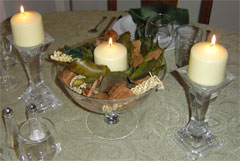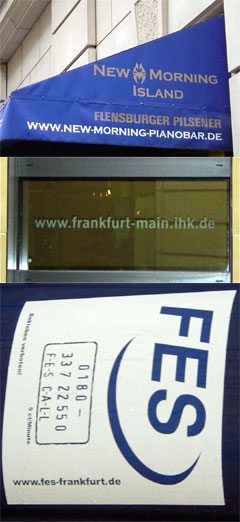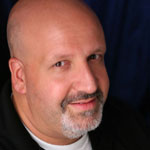Gift Ideas from The Hot Iron
Happy Black Friday! Today is considered the official start of the holiday shopping season in the US, though from the look of everything from streets to stores you would have thought it started the day after Halloween, or even earlier.
In the spirit of the holidays and in promoting small businesses as I like to do here at The Hot Iron, allow me to suggest gift ideas. These suggestions will be of products and services from fellow entrepreneurs and businesses. As the reach of The Hot Iron goes beyond Chicago, I will be writing about gifts you can get here in the Windy City and beyond. Some are purely online, and others are retail establishments.
Happy Shopping!
Announcements • Business • (0) Comments • PermalinkHappy Thanksgiving
 To all my readers and their family and friends, a safe, healthy and Happy Thanksgiving day! If you are traveling, by now – hopefully – you have made it to your destination and are well on your way to spending good times with those around you.
To all my readers and their family and friends, a safe, healthy and Happy Thanksgiving day! If you are traveling, by now – hopefully – you have made it to your destination and are well on your way to spending good times with those around you.
The accompanying picture is of the dining table and centerpiece from last year’s Thanksgiving, made by my lovely wife. This year I will try to get a picture of the complete feast to share next year.
Don’t eat too much, and a safe return trip!
Announcements • Diversions • (1) Comments • Permalink2 Smart Cars in One Parking Space in Frankfurt
The Hot Iron Goes Back to School at Ashworth University
 I am proud to announce you can read selected posts from The Hot Iron on Blogspot, the official blogs of Ashworth University.
I am proud to announce you can read selected posts from The Hot Iron on Blogspot, the official blogs of Ashworth University.
Ashworth University, based in Norcross, Georgia, offers distance learning courses and distance education programs for home study career education. In developing their blogs, Ashworth sought out experts in various disciplines to contribute their content to their blogs to accompany the faculty of the school. They contacted me and asked me if I would like to join this virtual expert lecture, and I was more than glad to accept this offer.
The Blogspot is a great example of a win-win situation. For Ashworth and its students, they have the opportunity, in one location, to read a wide variety of information and opinion from real-world experts. For myself, it is a new venue of readers – not to mention potential customers of Dunkirk Systems! It is similar to guest blogging, and my posts show up on Google Alerts and Serph, so their blog is getting good reach.
Some of my posts are on their Business and Technology categories. Even if you are an avid reader of The Hot Iron, check out their feeds and gain some insight from my fellow contributors.
Announcements • Business • (1) Comments • PermalinkObservations of German Domain Names
 As much as I write about domain names, it probably comes as no surprise I think about them and notice them more. On a recent vacation to Germany, I made many observations on them, and to the fortune of myself and my wife, they did not disrupt the trip. Well, not too much.
As much as I write about domain names, it probably comes as no surprise I think about them and notice them more. On a recent vacation to Germany, I made many observations on them, and to the fortune of myself and my wife, they did not disrupt the trip. Well, not too much.
One observation I made was the wide use of the German ccTLD of .de. A ccTLD is a country code top-level domain,. A top-level domain is commonly referred to as the domain name extension. Where .com, etc. can be used throughout the world, a ccTLD is ideally designated for an entity in a particular country. Most all of the observations I made of domain names had them ending in .de, both for German-based entities as well as international entities and brands. This was similar to the observations I made in Denmark the year before, where most all domain names ended in .dk.
I can see this for 2 reasons. The first is to direct a German language reader directly to German content on the Web site of an international brand. Have you ever gone to a Web site and the first thing you are presented with is a list of continents or countries for you to select before you get to any content? Identifying a user coming from Germany would lead them to German content, with the occasional option to select other languages. The second is national pride. It can be inferred that though .com is international, it originated in and is predominately used for US Web sites. It also adds a deeper level of identification that it is used by a German entity.
A second observation I made was the widespread use of dashes in domain names. I have a few photos of domain names in action, which represent only a handful of what I observed over the course of the trip. Where dashes can make for a more visually pleasing domain name display, it is easy to forget about them when recalling them from memory or when typing them. In the case of these particular names, a version of the domain names without dashes is not registered.
Whenever I work with a client to select domain names, I recommend they avoid dashes for the reason I mentioned above. I do have some clients who have them and use them, however they have been in use for many years, and in those cases alternate names redirect to the Web sites as well.
If anyone reading has any information or insight into the use of dashes in domain names in Germany, please comment to this post.
Domain Names • Technology • (14) Comments • Permalink
Page 179 of 217 pages ‹ First < 177 178 179 180 181 > Last ›



